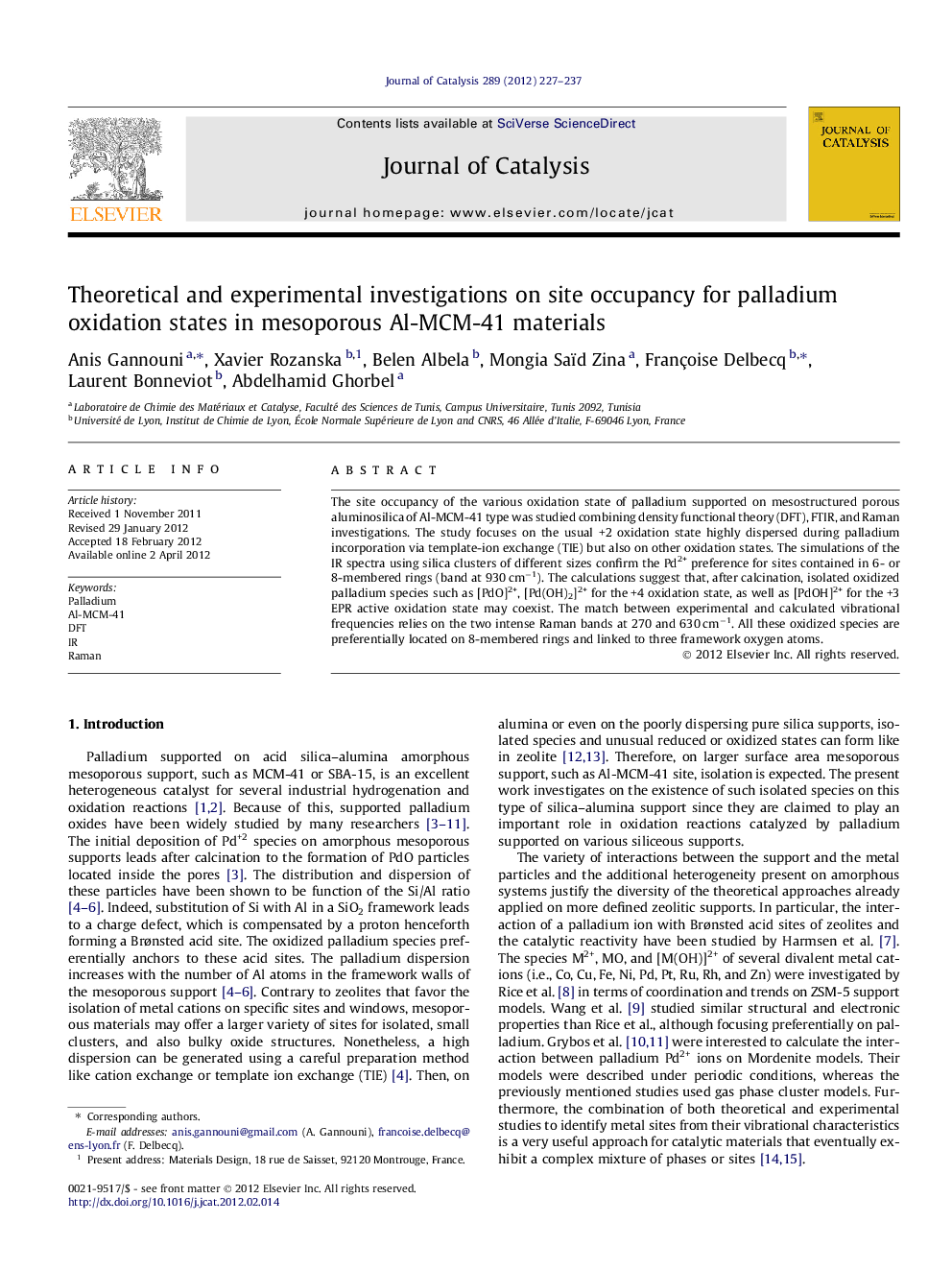| Article ID | Journal | Published Year | Pages | File Type |
|---|---|---|---|---|
| 61458 | Journal of Catalysis | 2012 | 11 Pages |
The site occupancy of the various oxidation state of palladium supported on mesostructured porous aluminosilica of Al-MCM-41 type was studied combining density functional theory (DFT), FTIR, and Raman investigations. The study focuses on the usual +2 oxidation state highly dispersed during palladium incorporation via template-ion exchange (TIE) but also on other oxidation states. The simulations of the IR spectra using silica clusters of different sizes confirm the Pd2+ preference for sites contained in 6- or 8-membered rings (band at 930 cm−1). The calculations suggest that, after calcination, isolated oxidized palladium species such as [PdO]2+, [Pd(OH)2]2+ for the +4 oxidation state, as well as [PdOH]2+ for the +3 EPR active oxidation state may coexist. The match between experimental and calculated vibrational frequencies relies on the two intense Raman bands at 270 and 630 cm−1. All these oxidized species are preferentially located on 8-membered rings and linked to three framework oxygen atoms.
Graphical abstractA combined theoretical and experimental investigation has been used to characterize the intrinsic mesoporous structure of the Pd/Al-MCM41 material. The Raman spectrum of PdO/Al-MCM-41, compared with simulations of Raman spectra on polyhedral oligomeric silsesquioxane models, suggests different structures for the oxidized form of the palladium present in Al-MCM-41.Figure optionsDownload full-size imageDownload high-quality image (96 K)Download as PowerPoint slideHighlights► We characterized experimentally and theoretically Pd/Al-MCM41 material. ► We compared between experimental and simulated IR and Raman spectra. ► The most favorable adsorption sites of Pd2+ and [PdO]2+ are the 6- and 8-rings. ► [PdIVO]2+, [PdIV(OH)2]2+, and [PdIIIOH]2+ species may coexist on the support.
